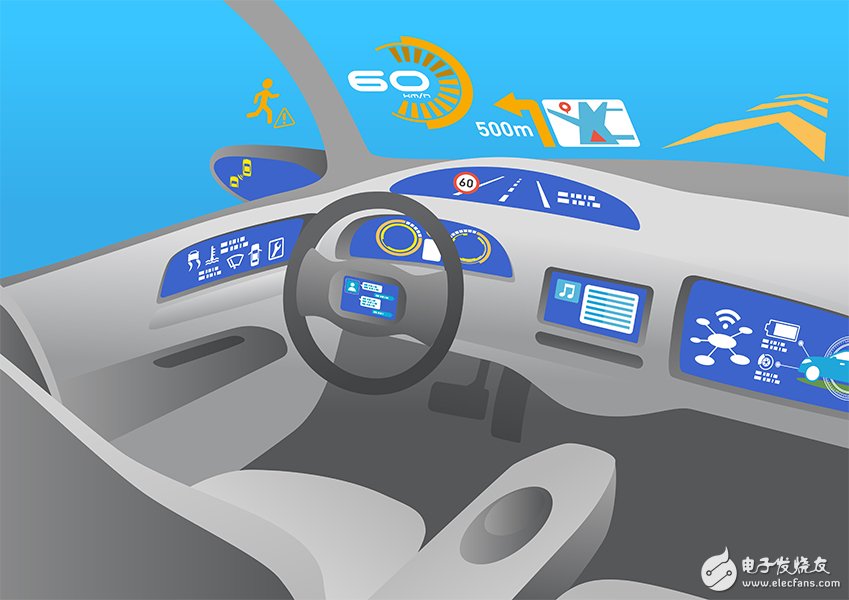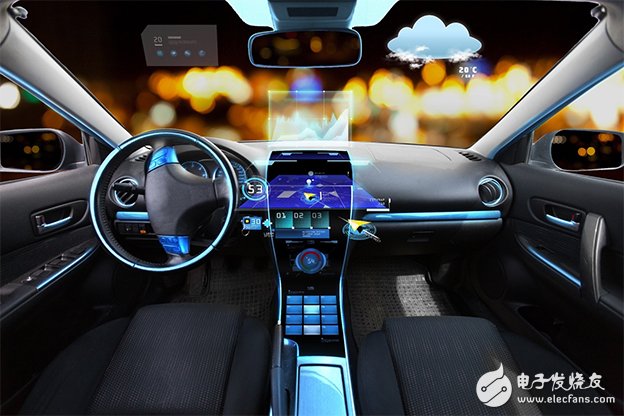Display technology can improve our lives, especially the car display, which can help us drive the car better, smarter and more serious. It can be added to new cars with many other sensors and cameras to become advanced driving assistance. Part of the system (ADAS) technology. What kind of display technology do you expect to see in your future car? The car display market is growing rapidly. The report released by IHS Automotive Consulting in January 2016 predicts that the annual market size of automotive display systems will grow at a compound annual growth rate of more than 10%, and will reach approximately $18.6 billion by 2021. Most of these displays will be liquid crystal display (LCD) and/or active matrix organic LED (AMOLED) displays. Market research firm IDTechEx expects sales of automotive AMOLED displays to reach $1 billion by 2021. This is sensible, and we do see many manufacturers looking to add larger, distinctive displays to their cars to support the car's infotainment, security, and built-in systems. Larger displays, such as the 17-inch display in Tesla, also support more applications we expect. Some monitors will still be located in familiar locations, such as the dashboard in the middle of the front of the car, so that both the driver and the front passengers can use it. There are also some displays designed to be curved (in this case, belonging to AMOLED), providing the driver with a better viewing angle, reducing distraction while they are monitoring multiple functions simultaneously, while the map and navigation of the display are also from the central instrument The disc is transferred to the front instrument panel (where the driver usually shows the speed in front of the driver). There is also a head-up display (HUD) technology. In essence, a head-up display projects a transparent digital image onto the windshield of a car, displaying information on the dashboard—including speed, engine temperature, mileage, and more. Its purpose is to display the information directly in front of the driver, allowing the driver to keep the eyes always looking forward, reducing the time they leave their eyes. This will ensure safe driving and reduce accidents. What about self-driving cars? As the name suggests, autonomous vehicles are driven automatically, so why do you need to display them? The simple answer is that display technology is not something that can be achieved tomorrow, and even after these technologies are widely recognized, not everyone will buy autonomous vehicles, although it may become very common in the future, or it may prove its safety through repeated experiments. . An article published in Fortune last year revealed that snow and ice weather is still a challenge for autonomous or semi-automatic vehicles, and it is still necessary to test its feasibility in various weather conditions. Basically, we divide consumers into the following three types: · Early adopters - This group of people is not too concerned about whether auto-cars have a more practical look and can reduce costs; they are more interested in new technologies and are more willing to use new technologies ahead of others than others. Some first-time car buyers also fall into this category. · Late users - they will continue to buy and drive "traditional" cars, and are accustomed to constantly updated electronic features that gradually narrow the gap between traditional and fully automated cars; eventually they may prefer the safety of automated cars Functionality, but still want to be able to use manual control when necessary. · Car enthusiasts and collectors – these people love their cars very much, whether they are old-fashioned cars or luxury cars, they only enjoy pure driving pleasure, or value the car itself, and enjoy the joy of having it. They will be willing to give up some skills and functions. If autonomous cars can really deliver the promised function, they will revolutionize the car market over the next decade – and will change or impact the insurance industry. The Vehicle Authority (DMV) is also in vain. So if we only drive an automatic car, do we still need a driver's license? Can a 10-year-old child ride such a car by himself? We are in a period of great change, especially in developed countries, because driving a car is part of everyday life that is indispensable. Car display is a topic that people discuss, and this topic will also be an important theme of the annual “Show Week†conference and exhibition – including all aspects of the latest display technology – this year's display week will be May 21-26 Held in Los Angeles, it is the most prestigious conference in the industry and will showcase a wide range of displays and related applications. Many on-board displays that visitors will see in other large-scale electronic exhibitions will also be unveiled. As the development of the automotive industry is a few years ahead of the development of in-vehicle design technology, it is important to know some technologies in advance for some decision makers to plan future auto production lines and models. If you want to know the "real look" of the future car display in advance, then take out your calendar and plan for the May show of the week. The International Display Society (SID) brings together the industry's top scientists, engineers, corporate researchers and business people with a value of more than $1 trillion a year. Founded in 1962, SID is designed to promote display technology and continues to this day. The association also launched the monthly magazine "Information Display Magazine" and the annual "Technical Papers Digest" published in the "Show Week Forum and Exhibition" in the spring. For more information, please visit: http://. Hybrid solar inverters play a crucial role in enabling homeowners to harness the power of the sun and reduce their reliance on traditional grid electricity. With the ability to store and use solar energy as needed, hybrid solar inverters offer a reliable and sustainable energy solution for residential use. solar kits,hybrid solar inverter,Solar power with controller,solar generator,residential inverter Bosin Power Limited , https://www.bosinsolar.com


A hybrid Solar Inverter is a device that converts the direct current (DC) electricity generated by solar panels into alternating current (AC) electricity that can be used to power home appliances and other electrical devices. In addition to this basic function, hybrid solar inverters also have the capability to store excess energy in batteries for use during periods of low sunlight or high electricity demand.
The production process of a hybrid solar inverter involves the assembly of various components such as the DC-AC converter, battery management system, and monitoring and control systems. These components are carefully integrated to ensure efficient and reliable operation. The inverter is then tested to ensure that it meets safety and performance standards before being packaged and shipped to customers.
In a home setting, a hybrid solar inverter is typically connected to a solar panel array on the roof of the house. The inverter converts the DC electricity generated by the solar panels into AC electricity that can be used to power lights, appliances, and other electrical devices. Any excess electricity generated can be stored in batteries for use at a later time, such as during the evening or on cloudy days.